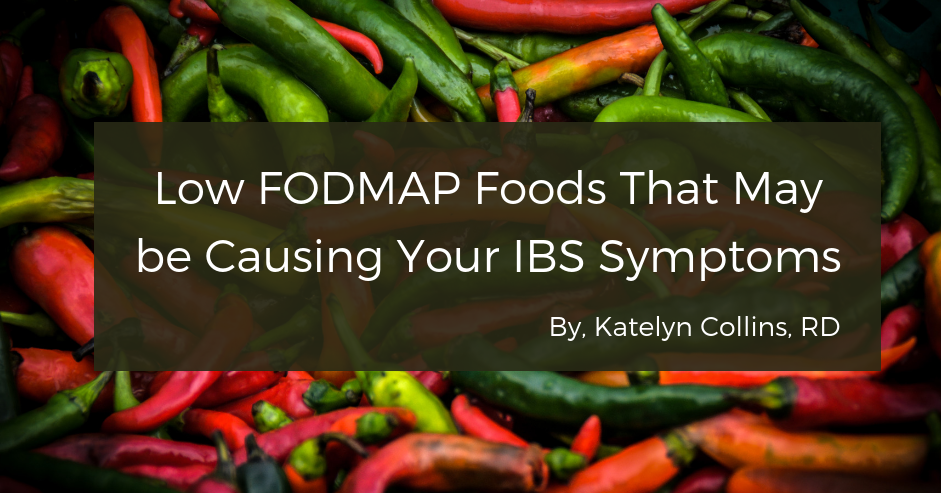Low FODMAP Foods That May be Causing Your IBS Symptoms

The low FODMAP diet is a fantastic way to help identify foods that trigger your IBS symptoms, but you may find that you are having flares even when you are strictly following the diet. Certain low FODMAP foods may cause IBS symptoms because of their effects on the gut, so it’s important to be aware of the possible culprits.
Caffeine
Have you ever noticed that you need to “go” shortly after your first cup of coffee in the morning? This is because caffeine stimulates the gut and speeds up the movement of food through the intestines. If you have IBS, you may want to consider removing or limiting caffeine and see if you have an improvement in symptoms, but watch out for caffeine-free coffee substitutes that are made from high FODMAP ingredients such as inulin and chicory root.
Peppers
Mild bell peppers, moderately spicy chili peppers, and intensely hot habanero peppers can all trigger IBS symptoms. As you may have guessed (or experienced!) the hotter the pepper, the worse the reaction. Capsaicin, the active ingredient in peppers that makes them spicy, is believed to speed up the movement of food through the gut and can cause acid reflux symptoms. Spices such as chili powder and cayenne pepper may also cause reactions in some people.
Fat
Fats speed up the time it takes for food to move through your intestines. If you have IBS-D (IBS with diarrhea), a high fat meal may trigger your symptoms. If you find that you have trouble digesting fats, you may not need to remove them from your diet all together. You can spread out your fat intake over all your meals and stay away from fried and greasy foods, as they often contain a large amount of fat per serving.
Alcohol
If you have IBS, there are a few things about alcohol you should know before going out for drinks with friends. Many popular drink options are high FODMAP because they contain excess fructose. Alcohol is also a gut irritant, so low FODMAP drink options may still cause GI distress. For a list of high and low FODMAP drinks, check out this article from A Little Bit Yummy.
Portions
In my most recent blog post, I highlighted the importance of being mindful of your serving sizes when on the low FODMAP diet. If you have found success on the diet but are still having unexplainable flares, take a look at your portion sizes and be sure you are following the serving recommendations listed on the Monash University app. For example, almonds are high in FODMAPs if you exceed ten nuts.
If you’re on the elimination phase of the low FODMAP diet and still having IBS symptoms, it’s a good idea to connect with a dietitian to help you figure out what other foods may be causing your symptoms.
Ready to get to the root of your IBS symptoms?
Click here to learn how to work with me!